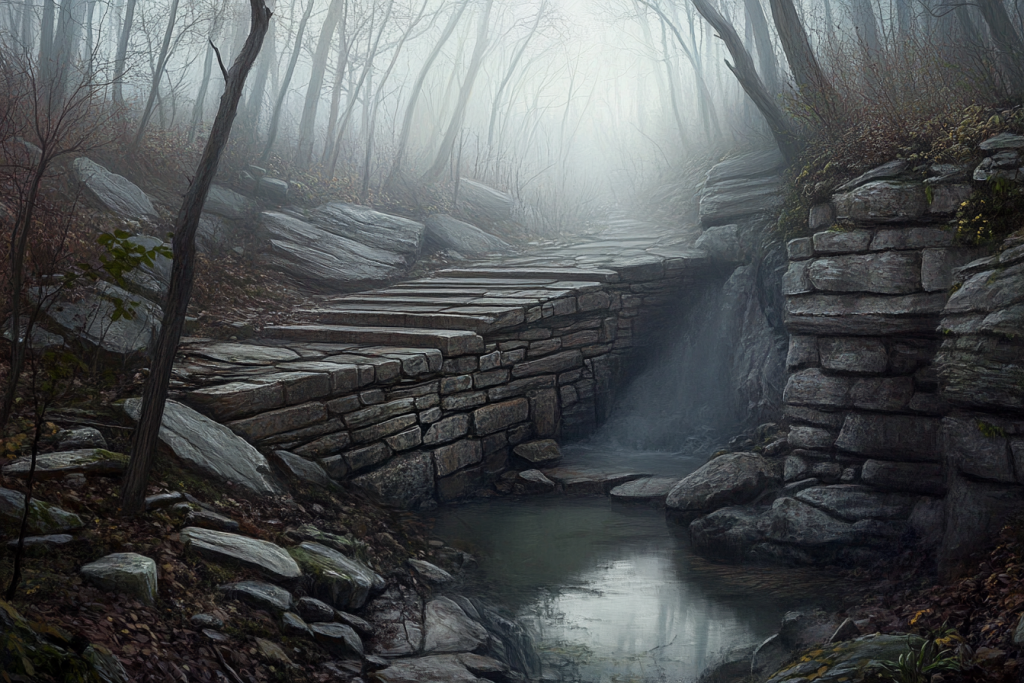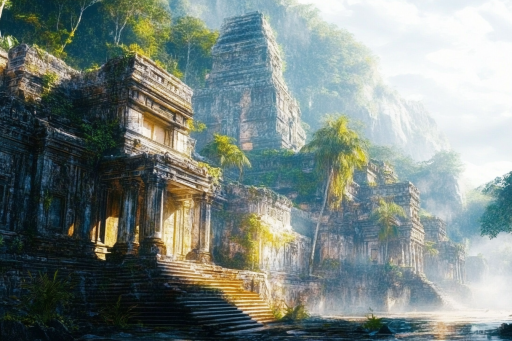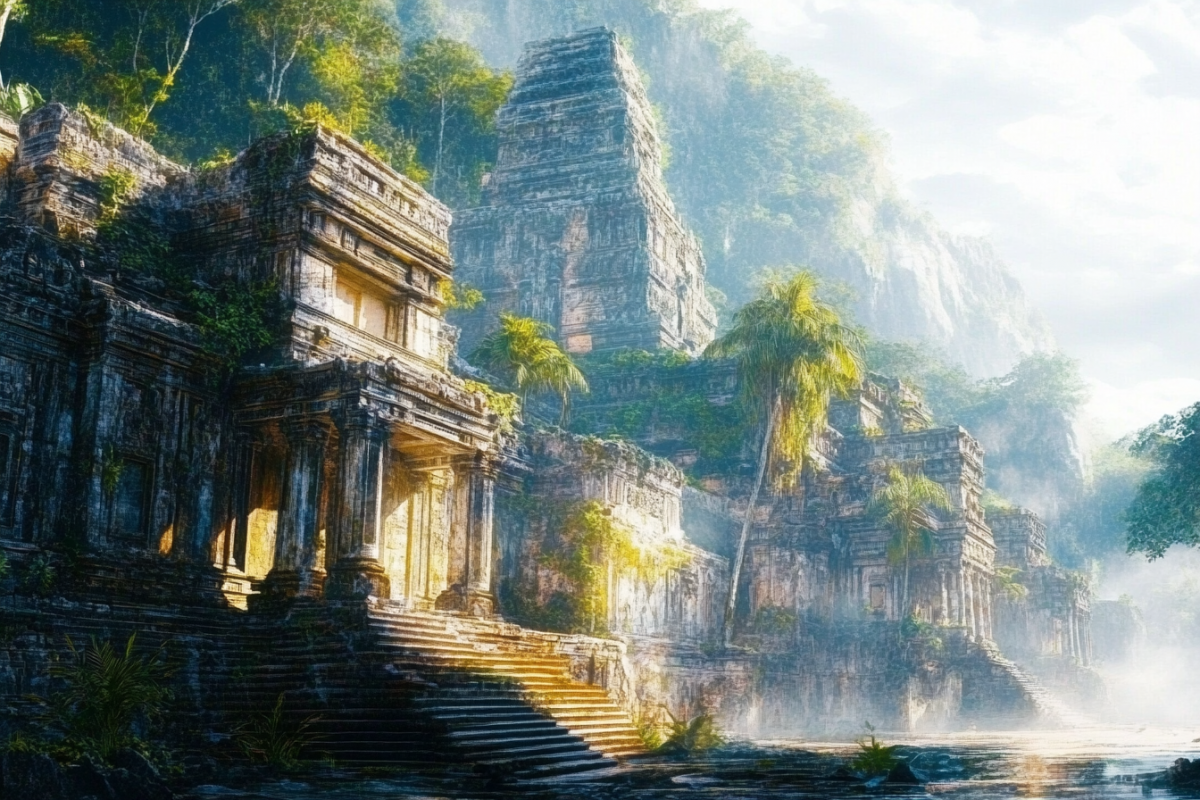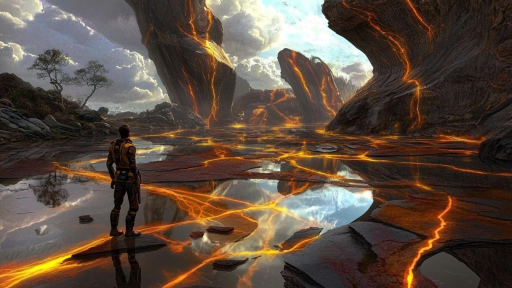
Some places on Earth defy logic—not because of their natural formations, but because of the seemingly impossible structures that stand within them. Deep in jungles, atop treacherous peaks, and even in the middle of the ocean, ancient civilizations and mysterious builders left behind architectural marvels that challenge our understanding of history, engineering, and human capability. Who built them? How did they do it? And most importantly—why? As you explore these sites, prepare to question everything you thought you knew about the limits of ancient construction.
The Tower Beneath the Waves

Off the coast of Japan, a massive, tiered stone structure known as the Yonaguni Monument sits eerily beneath the ocean. Some argue it’s a naturally occurring formation, but its sharp angles, stair-like terraces, and what appear to be precise carvings suggest otherwise. Could an ancient civilization have built a towering city before the ocean swallowed it whole? If so, this might be the oldest sunken structure on the planet, rewriting the timeline of human history.
The Fortress of the Clouds

High in the Peruvian Andes, the ruins of Kuelap sit atop a mountain peak so steep it seems impossible that a civilization could have built there. The walls are over 60 feet high, enclosing hundreds of circular stone structures that predate even the Inca. No roads lead to it, no rivers support it—so how did its builders transport the massive limestone blocks needed to create this sky fortress? The mystery of its origin is as baffling as the location itself.
The Arctic Pyramid

In the frozen wastelands of Antarctica, satellite images have revealed what appears to be a near-perfect pyramid rising from the ice. While some claim it’s a natural mountain shaped by extreme winds, the symmetrical design has fueled theories of an ancient civilization—or even something not of this world. If it was built by human hands, it raises a staggering question: Who was here before recorded history, and what did they know?
The Cave City Carved in Stone

Deep in the cliffs of Turkey, the underground city of Derinkuyu plunges multiple levels beneath the earth, capable of housing thousands of people. With ventilation shafts, hidden passages, and massive stone doors, this subterranean labyrinth was clearly built to protect its inhabitants—but from what? Some believe it was an ancient refuge from invaders, while others suspect it guarded against a long-lost cataclysm. No matter the purpose, its sheer complexity is mind-boggling.
The Island Fortress That Shouldn’t Exist

Off the coast of Italy, the fortress of Montecristo Island stands isolated in the sea, built upon sheer rock cliffs with no visible connection to the mainland. The logistics of constructing such a stronghold without modern equipment seem impossible, yet it has stood for centuries. Who built it, and why did they choose such a forbidding, unreachable place? Legends of hidden treasures and secret societies only add to its enigma.
The Temple Suspended on a Cliff

The Hanging Temple of China clings to the side of a mountain, appearing as though it could slide into the valley below at any moment. Built over 1,500 years ago, its wooden beams are embedded deep within the cliffside, defying gravity and time. Without modern scaffolding or equipment, how did ancient builders suspend an entire temple in midair? Its impossible construction remains one of the world’s greatest engineering mysteries.
The Labyrinth Beneath the Desert

Beneath the sands of Egypt, a sprawling network of underground chambers known as the Lost Labyrinth was described by ancient historians, but no definitive evidence has ever been found. Yet, recent radar scans suggest something massive is buried beneath Hawara, eerily matching the ancient descriptions. Could this be a forgotten wonder of the world? If so, it would rewrite everything we know about the civilization that built it.
The Stone Giants of a Forgotten Civilization

Deep in the Indonesian jungle, the megalithic site of Gunung Padang stands as one of the most perplexing ruins on Earth. The enormous, precisely stacked stone pillars suggest advanced knowledge of engineering, yet carbon dating hints at a civilization that existed tens of thousands of years ago—long before any known human culture had such capabilities. If this is true, then history as we know it is deeply flawed.
The Castle Built on an Impossible Spire

Perched atop a solitary rock column, Georgia’s Katskhi Pillar seems more like a place from legend than reality. Rising nearly 130 feet into the sky, the tiny monastery at its peak is accessible only by a rickety metal ladder attached to the rock face. How medieval builders carried materials to such an unreachable height remains a mystery, and why anyone chose to live in such isolation is even more confounding.
The Lake Temple That Defies Time

In the middle of Cambodia’s vast Tonle Sap Lake, an ancient stone temple rises from the water as if untouched by the passage of time. With no records of its origin and no modern infrastructure connecting it to the shore, its existence in such an unstable environment is an enigma. Was it built before the water levels rose, or did its creators possess knowledge of hydrodynamics far beyond their time?
The Wall That Goes Nowhere

The Great Zimbabwe Ruins feature a towering stone wall that was built without mortar yet still stands today. The builders left behind no written records, and its purpose remains a mystery—no fortress, no city, just a massive wall with no apparent function. Was it ceremonial, defensive, or something else entirely? Even modern engineers struggle to explain how it has endured for centuries.
The Village Carved Into a Cliff Face

In the high cliffs of Arizona, the ancient Ancestral Puebloans carved entire villages into the rock, balancing on sheer drops with no modern tools or equipment. With no clear reason why they abandoned their sky-high dwellings, some speculate they were fleeing something unseen. The skill required to carve, inhabit, and sustain life in such a perilous location is beyond comprehension.
The Bridge to Nowhere

Deep within the remote mountains of South America, an ancient stone bridge arches over a gorge—yet it leads to nothing but sheer rock on the other side. The construction is flawless, with expertly fitted stones that have withstood centuries of erosion, yet no evidence remains of any civilization that could have built it. Some believe it was part of a lost city, now swallowed by time, while others speculate it was meant for something other than human travelers. If the bridge was never meant to connect two places, then what was its true purpose?
What If We Got It All Wrong?

For centuries, historians and archaeologists have pieced together human history through the remnants left behind, but what if some of these structures are evidence of a lost knowledge far greater than we imagined? Perhaps these places weren’t just about survival, but about something bigger—something beyond our current understanding of ancient civilizations. The locations, the techniques, and the sheer impossibility of their construction beg a deeper question: Were our ancestors more advanced than we ever realized, or is there something we’ve yet to discover?





